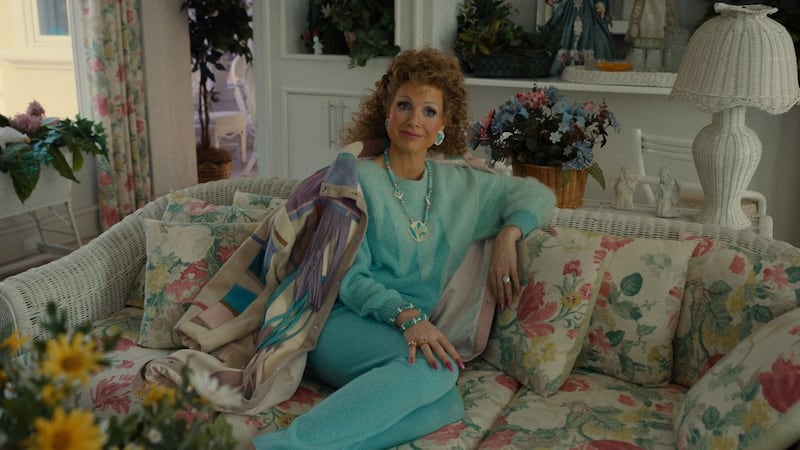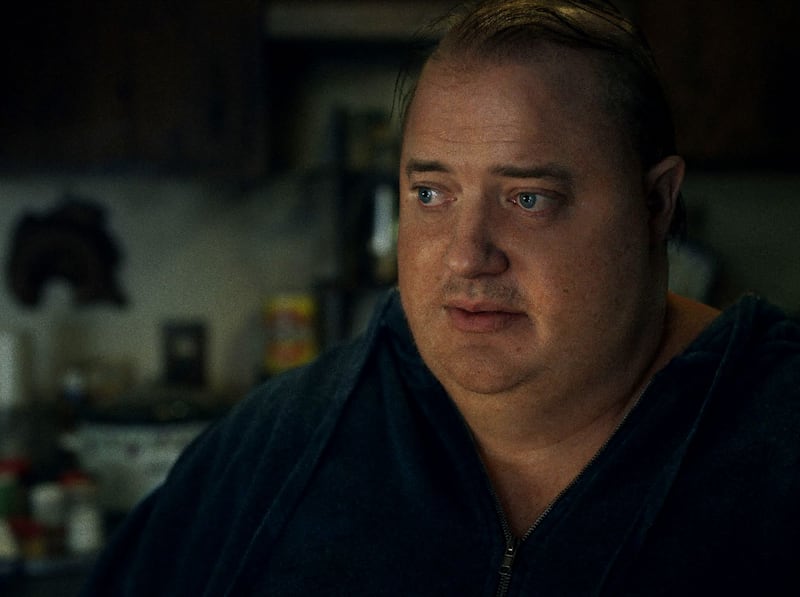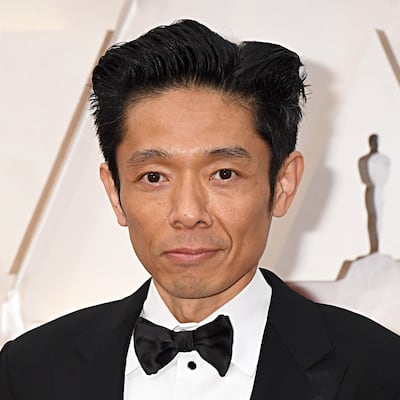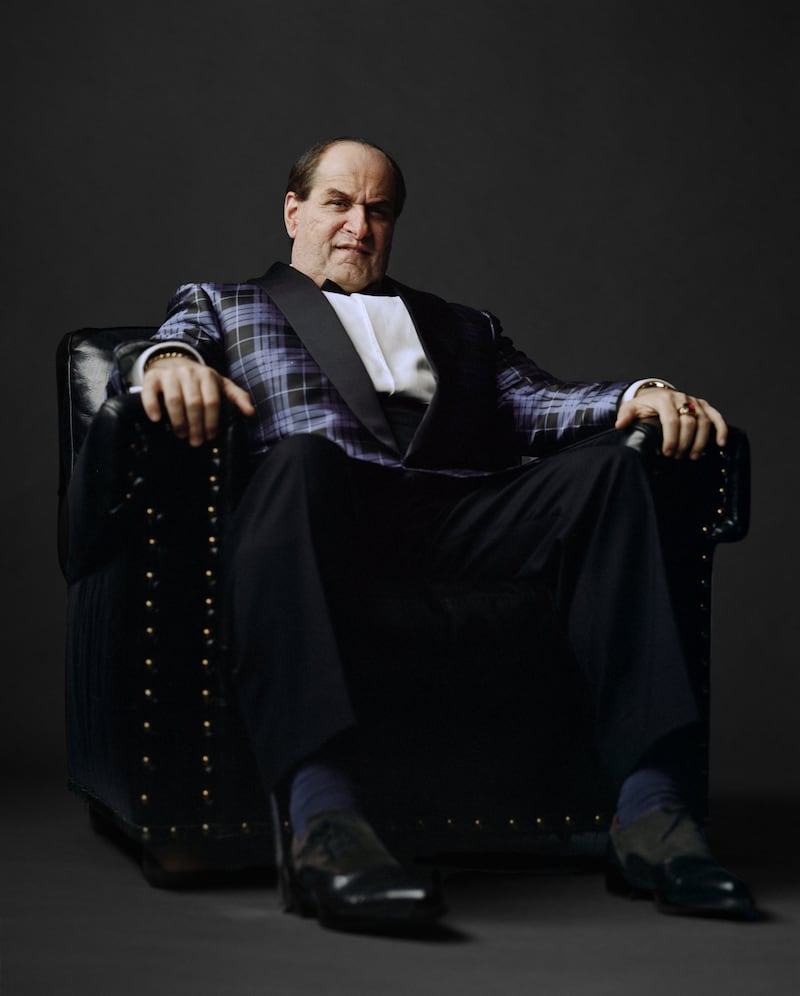At the start of last year’s biopic The Eyes of Tammy Faye, a make-up artist is shocked to learn that the televangelist has her lipliner and eyeliner permanently tattooed on. She offers to soften them, but Faye demurs: “That’s my trademark. If I take that away, then it’s not me. This is who I am.”
It’s the film’s frontispiece, about appearance, truth and the nature of performance to mediate between them. One that’s especially relevant given the actor playing Faye, Jessica Chastain, is herself covered in layers of silicone prosthetics to portray the preacher.

Prosthetics are all the rage for the A-list. On-set images recently emerged of Bradley Cooper embalmed in silicone to become a Leonard Bernstein doppelganger for his forthcoming biopic. Brendan Fraser received a standing ovation at this month’s Venice film festival for making the fatsuit more than a one-note joke in the obesity drama The Whale.
Colin Farrell similarly swaddled his gorgeousness to play the Penguin in The Batman. The modern-day Dorian Gray Jared Leto finally got acquainted with middle age by transforming into the paunchy, balding Paolo Gucci in Ridley Scott’s House of Gucci. And Gary Oldman won the best-actor Oscar, despite his mouth being the only recognisable Oldman feature, complete with cigar, for his Winston Churchill incarnation in the 2017 film Darkest Hour.
EU call to stockpile food and essentials: What would be in your 72-hour survival bag?
Adolescence in teenagers’ own words: ‘Parents have absolutely no idea’
Trocadero restaurant review: A timeless classic that is old-school in the best sense
Irish Tesla owners on Musk’s EV company: ‘I’m either stuck with it, or I have to take a big financial hit’
Amid the inevitable my-unbelievable-transformation articles, there has been a certain amount of scepticism about this excess of prosthetics. Was it so hard to find actual doughy middle-aged actors to play doughy middle-aged characters? There is something undoubtedly showy about stars’ desire for self-effacement — you might call it the Mrs Doubtfire paradox. The make-up artist Göran Lundström was surprised when Leto approached him and asked to be unrecognisable as Paolo Gucci: “I’d never had anyone ask for this before — usually, you always wanted to see the actor in there. The new thing is that people are impressed by the fact you can’t recognise them.”

But Kazuhiro Tsuji, the prosthetics specialist responsible for the Cooper and Oldman makeovers, believes focusing simply on the act of transformation is a mistake. “I hate to see that article: ‘This actor is unrecognisable.’ Because it’s so easy to make someone unrecognisable. The point is how the make-up represents this character or story. What we are doing is part of the storytelling.”

Like Tammy Faye’s slap, the externals express internal truths: who that person is. Actors are increasingly realising how today’s prosthetics technology can be a gateway to authenticity — and they are often the ones driving these transformations, according to Lundström. He says he saw Leto and Farrell change visibly in the make-up chair, as the silicone pieces were applied. “Once the make-up starts looking like a face, their voice, their whole behavioural pattern changes,” says Lundström. “It’s really fascinating, because that’s what you want as a make-up artist — you want the actor to identify with their new look.”

After Leto’s approach, Lundström had just three weeks, working seven days a week, to craft the pieces required to change his face into Gucci’s; getting the right level of make-up was a trial-and-error process. Lundström was almost scared by the totality of Leto’s request: “There’s always that fear of covering up too much. It can feel masky and [create] a distance between the audience and the actor.” One concern is prosthetics becoming so physically constraining that actors can no longer act. In particular, Leto drove Lundström to transform his nose.
Lundström says what they achieved is not a Paolo Gucci facsimile but a Leto/Gucci hybrid that conveys what needs to be dramatically conveyed: the dynastic fashionista buffoon. And it pays off: unlike a number of recent performances that have been wildly out of kilter with the surrounding movie, Leto in his get-up has a kind of lightly accentuated camp that fits perfectly, perfumed with that outrageous Florentine accent.
Silicone — more durable than latex prosthetics — has been in use for about 20 years. But Lundström believes a prosthetics arms race is under way, driven by ever-more-spectacular applications of the craft.

Tsuji coming out of retirement to help Oldman go full Winston seems to have upped the ante. Known to all in the profession as Kazu, he is a silicone pioneer who in the mid-2000s solved a key technical problem with the material: how to apply paint to it. He had originally been inspired to become a prosthetics make-up artist by Dick Smith’s transformation of Hal Holbrook into Abraham Lincoln for the 1985 miniseries North and South. But he became disillusioned by the way his prosthetics work was increasingly shunted into sci-fi and horror, rather than the mimetic realism that fascinated him, and he quit to focus on fine art.
For Tsuji, truth really is written on our faces: “It’s a person’s diary or history of their life. They are born with a face, but at the same time life leaves a record there. Sometimes in photographs, you see a particular wrinkle. When I study a character, I try to understand why they look like that: what kind of mentality they have and what they went through.”
The process is not dissimilar to the internal excavation actors undertake — and Tsuji says he sometimes shares his insights with them in the make-up chair. Recently, he morphed Charlize Theron into the former Fox News journalist Megyn Kelly for the sex-harassment exposé Bombshell. He says he is a kind of counsellor, helping actors achieve confidence in their performance’s authenticity, but stresses that a perfect likeness is not the end goal — rather, a functional dramatic construct. For example, Churchill had a prominent scar on his forehead because of a collision with a New York taxi; Tsuji omitted it because the incident didn’t feature in Darkest Hour’s script, and didn’t have any bearing on the events depicted.
In ideal circumstances, with astute technicians such as Tsuji and Lundström working with conscientious actors, prosthetics are a shortcut to method acting, allowing performers to inhabit a character’s physical form without some of the traditional obligations, such as excessive weight gain, and so have speedier access to their characters. Marlon Brando, using a mouthpiece in The Godfather to pull his Don Corleone timbre into that world-encumbered register, was doing a rudimentary version of the same thing.
In method parlance, it is about passing from the “art of representation” to the “art of experiencing”. Of course it’s debatable whether what actors then experience is the reality of the character, or just some inner emotion of their own they use to animate them. But it didn’t really matter in the past; in fact, this personality fusion was precisely what big stars relied on, especially if they bore little resemblance to the real-life figures they played. It was the lightning convergence of inner essences, star persona aligning with the subject’s personality traits, that counted. Henry Fonda was not exactly a dead ringer for Abraham Lincoln, but the air of clean-cut idealism synced up in Young Mr Lincoln.
Unlocking the inner chamber of the psyche is where the action is; something Todd Haynes’ 2007 Bob Dylan biopic I’m Not There knew well when it cast six different actors, not necessarily the same gender or race, to play the musician. As the singer once put it: “I contain multitudes.” If you had to point to any performer who is a particularly adept essence-bottler, it would be Andy Serkis. In his remarkable blue-screen tours de force as Gollum in the Lord of the Rings films and the chimpanzee Caesar in the rebooted Planet of the Apes franchise, he had to capture the animus first, before the CGI — perhaps the ultimate form of prosthetics — were applied afterwards, in postproduction. But his work goes to show how prosthetics, whether physical or digital, can be far more than a hollow carapace.
With Fraser squarely in next year’s Oscars race, and Cooper presumably hoping for the same in 2024, a layer of silicone could settle the next couple of best-actor awards. In this prosthetics push, performers and make-up artists, whether they’re working on the inside or the outside, are always chasing a will o’ the wisp: closing the gap with reality. Maybe Tsuji, the master craftsman, feels the burden the most: “I always feel defeated, because I try to mimic nature, but I can never be as perfect as that. I want my work to be invisible.” — Guardian













